The best horror movies of the '90s
Lovers of horror are always down for a good scare, though, of course, which movies you should watch is always a subject of debate. Some vintage fans love to check out the slasher films of the 1970s and 1980s. Others prefer the more "elevated" horror movies that we began getting in the 2010s. So why are we less inclined to revisit anything in between? Simply put, many don't associate the '90s with good horror.
Here's the good news: those haters are dead wrong. Don't believe it? Just check out our definitive list of the best '90s horror movies that are absolutely worth your time.
<i>Misery</i> (1990)
Part of what makes Misery so affecting is the simplicity of its premise. What if a popular writer was at the mercy of an unhinged fan? Much of the unexpected twists and turns of the film come from the now-revered Kathy Bates, who was a relatively unknown actress at the time, though she's a force to be reckoned with for James Caan, who plays a famed romance writer who is left helpless and handicapped after a nasty car crash.
As an adaptation of the Stephen King novel, both the book and the movie serve as an exploration of authorial anxiety in the face of crazed fans. And now in our tense digital age ripe with parasocial relationships, a story about an insane fan trying to get a creator to change his work to suit her own preferences seems more timely than ever before.
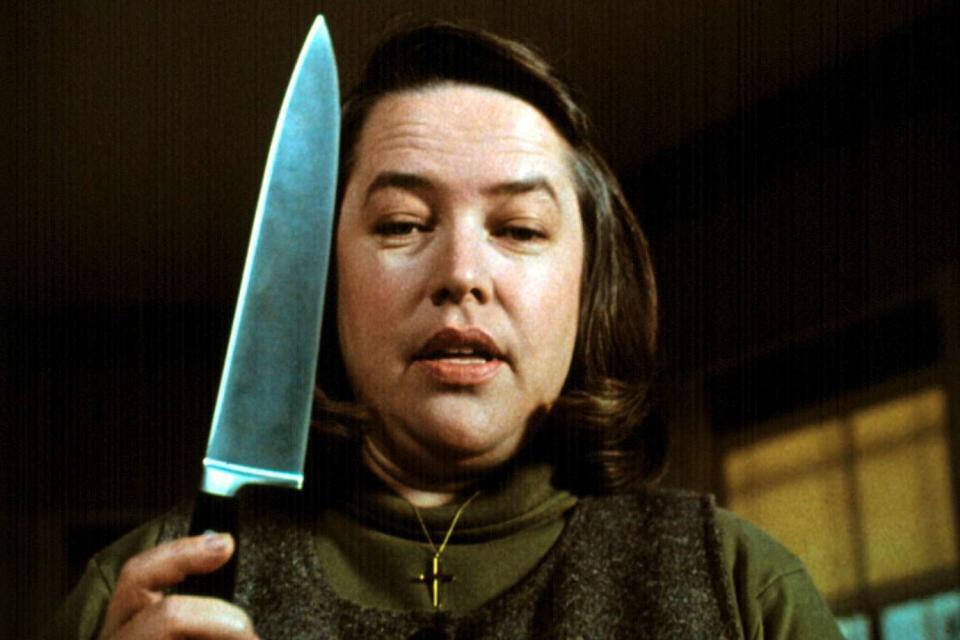
<i>It</i> (1990)
Speaking of Stephen King adaptations, his creepy clown novel It was recently turned into not one, but two big-budget movies with a prequel TV show in the works. But for a great many horror fans, their first exposure to Pennywise was in the 1990 made-for-television film It. Originally aired as a two-part miniseries, for some fans, it may be a little long: whereas the perfect horror movie is often 90 minutes, watching It in one go means consuming over three hours of killer clown theatrics, which is just one reason EW critic Ken Tucker said in his review that the movie had a "slow pace."
But where it really shines is the "terrific" cast, especially manic Tim Curry, who perfectly embodies Pennywise, as he walks the narrow tightrope between scary and silly. As an adult viewer, you may even find yourself laughing along with the cackling clown. But as a child watching in the early 1990s, it's easy to see how this movie gave an entire generation a severe fear of circus performers.
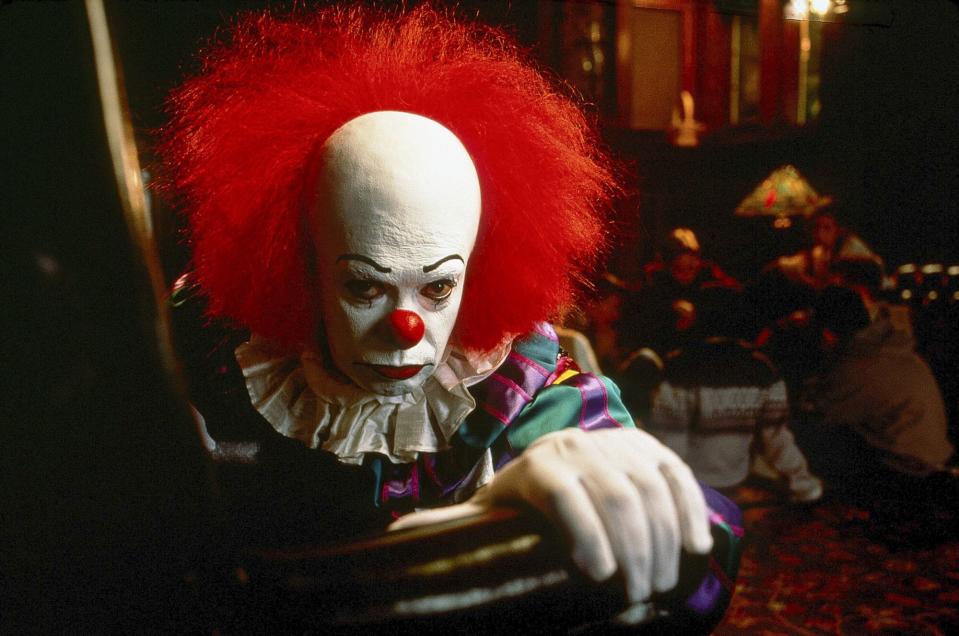
<i>Night of the Living Dead</i> (1990)
Hollywood loves to remake movies, especially horror films. Sometimes, this is for the better (do you actually know any horror fans that would rather watch 1951's The Thing From Another Planet over the transcendent 1982 John Carpenter classic?)
Still, some horror cows are more sacred than others, and many thought it would be sacrilege to remake George Romero's zombie classic Night of the Living Dead. Some critics felt that way about the 1990 reboot, with Roger Ebert going so far to say that "the remake is so close to the original that there is no reason to see both."
However, we beg to differ. The movie has a dramatically different ending that is sure to shock and please mega-fans of the original. The casting is wonderful, with Patricia Tallman giving off the Big Final Girl Energy that Barbara never had before. And Tony Todd is pitch-perfect as a hero who, at times, can be as intimidating as the undead outside the house. Holding it all together is director and longtime Romero collaborator Tom Savini, proving that he is just as adept behind the camera as he is bringing gruesome horror special effects to life.
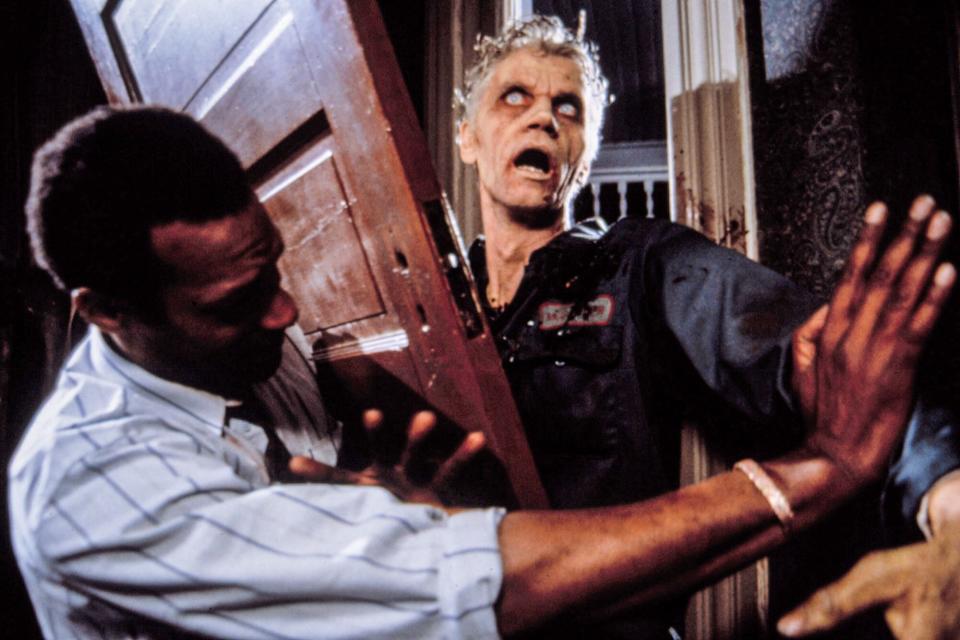
<i>The Exorcist III</i> (1990)
Before you call up an old priest and a young priest on us, just listen: Exorcist III is far better than you think it is. This moody psychological horror film is more than just an apology for the dreck that was the second Exorcist movie. Rather, it's a powerful film in its own right that blends several disparate elements into something both evocative and provocative. The cast of this movie is nothing short of hypnotic. George C. Scott dazzles as a police lieutenant navigating a world where serial killing intersects with demonic possession. And Brad Dourif is at his career creepy best as the "Gemini Killer," a murderous mortal that also serves as a host for the demon Pazuzu.
With all that said, The Exorcist III is a bit of an acquired taste. It's far talkier than your average horror flick, though, with monologues like these, listening is a pleasure. And it's relatively free of excessive gore, serving as proof that a film doesn't need buckets of blood to make you scared whenever you turn out the lights.
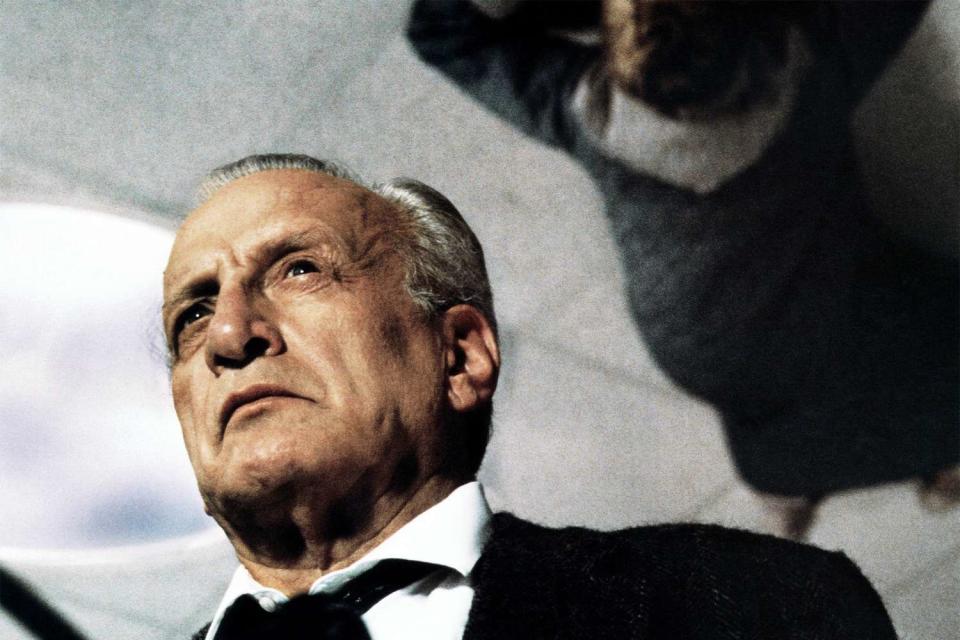
<i>Tremors</i> (1990)
Psychological horror is great and all, but sometimes, we're just in the mood to watch modern cowboys take on monstrous mutants in the desert. And when you have that kind of itch, the best way to scratch it is to watch Tremors.
The joy surrounding this movie is downright infectious. The plot is barebones: two rugged heroes (played by Kevin Bacon and Fred Ward) must help a town fight off giant worms who use vibrations to hunt their prey. The town itself is full of colorful characters, including Reba McEntire and Michael Gross, and their collective patter is just as engaging as the excellent creature work in the film.
Tremors perfectly intersects horror, westerns, and sci-fi creature features, but you'll definitely want to rewatch this one rather than check out the cavalcade of increasingly disappointing sequels.
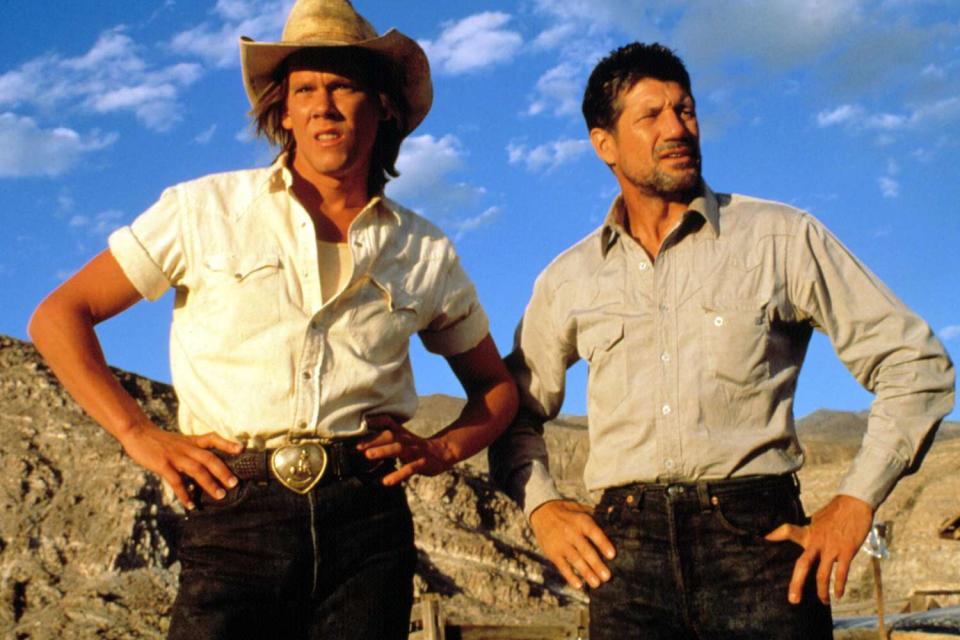
<i>Gremlins 2: The New Batch</i> (1990)
Most horror fans would agree that sequels often suck and are driven mostly by shortsighted studio greed. But what happens when you get a horror sequel helmed by someone who shares those sentiments? You get Gremlins 2: The New Batch.
As a sequel to the original Gremlins, The New Batch is different in almost every way except for the creatures themselves. Instead of the Gremlins taking over a tiny town, they take over the Clamp Center, a building owned by John Glover doing his best vintage Donald Trump impression. This new setting helps director Joe Dante pull off some truly incisive satire of the Hollywood machine.
Because the Clamp Center skyscraper is home to so many different businesses and colorful characters, things get weird very quickly. Leonard Maltin, a staunch critic of the first movie, gets eaten by Gremlins followed by the little menaces taking over a theater before being told off by none other than Hulk Hogan. Scientific experiments led by Christopher Lee also give us sequel-worthy mutations, including flying Gremlins and one made of electricity.
Hovering over everything is the hubris of Clamp (Glover) himself, whose relentless pursuit of profit led to chaos and destruction (after all, it was his goons that grabbed Gizmo because they saw the potential for profit). This is Dante's commentary on a studio system that doesn't necessarily care about creativity or quality. Fortunately, Dante isn't above poking fun at himself as well, including a scene where characters debate just how the hell "eating after midnight" works when it comes to turning Mogwais into Gremlins.
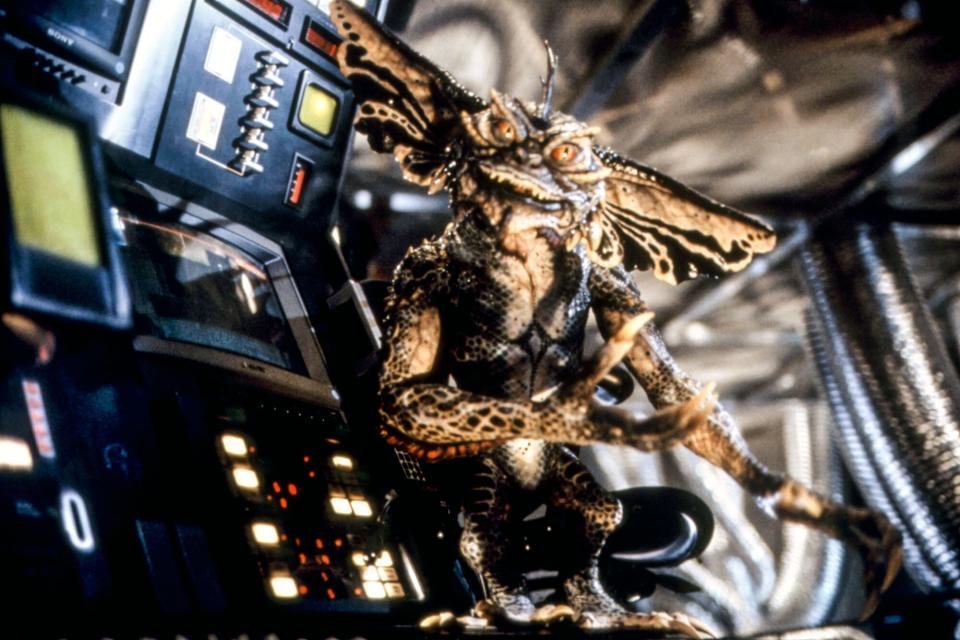
<i>The Silence of the Lambs</i> (1991)
The great quality of The Silence of the Lambs nearly speaks for itself. The only horror movie to ever win Best Picture? Check. Sizzling performances from actors at the top of their game? Check. Enough famous lines and imagery to launch over three decades of memes, parodies, and references? Check, check, check!
Beyond that, though, this movie is an important artifact in horror movie history. In a time when audiences associated horror with tired outings from Freddy Krueger and Jason Voorhees, The Silence of the Lambs reminded us that horror can be scarier when it is more down-to-earth.
Sadly, this movie also serves as a high-water mark for a very mixed franchise. Beginning one decade after this film came out, Hannibal, Red Dragon, and Hannibal Rising gave us increasingly diminished returns for the onscreen adventures of Hannibal Lecter. This was proof that not even Anthony Hopkins could top his own stunning performance, and we wouldn't get a proper Hannibal renaissance until Mads Mikkelsen stepped into the role for NBC's Hannibal.

<i>Bram Stoker's Dracula</i> (1992)
Do you love vampire movies, period pieces, and practical effects? In that case, Bram Stoker's Dracula is a movie practically custom-made for your taste. While ostensibly an adaptation of the original vampire novel, director Francis Ford Coppola takes the original tale (which was comprised entirely of letters, newspaper articles, and diary entries) and brings the scenes to life with a (ahem) killer cast.
Some cast members are better than others, of course. As Dracula, Gary Oldman chews up scenery even more often than he imbibes human blood. And Anthony Hopkins as Van Helsing helps find the perfect line between being a man of science and a man who must confront a mystical and mysterious threat. These performances are so good that you might not notice Winona Ryder's damsel or an overwhelmed Keanu Reeves applying one of the worst accents in cinematic history.
The movie's use of costumes, miniatures, and practical effects is also nothing short of breathtaking. You may occasionally find yourself stopping paying attention and start asking "how did they do that," especially when you see a perfect shot combining a diary entry and a speeding train against the setting sun.
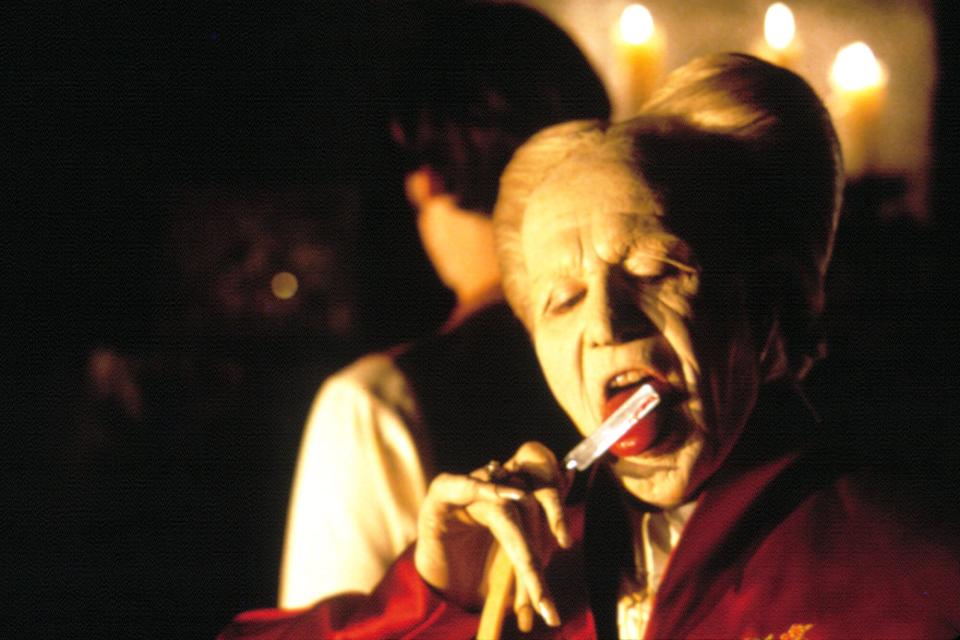
<i>Candyman</i> (1992)
While the Hellraiser movies are full of iconic characters and moments (Pinhead and the rest of the Cenobites have been serving looks since 1987), that franchise was seriously declining by the '90s. Fortunately, this left room for an arguably better adaptation of Clive Barker's fiction: Candyman, a film that expertly blends uncomfortable (but necessary) conversations about race in America with scream-out-loud scenes that helped cement Tony Todd as one of horror's greatest actors.
The general plot of the movie, involving a white graduate student researching an urban legend about a Black son of a slave who was lynched for falling in love with a white woman, offers complex questions for viewers to ponder. Does white academic discourse ultimately elevate or sublimate Black narratives? And does grad student Helen's idea of people using the Candyman legend to overcome trauma and hardship serve as a commentary on why we love horror? This is a movie where you'll get an entirely different chill the longer you think about the film. If you're in it for the gore, though, this movie spills more than a few drops, all while putting up some unforgettably freaky imagery (trust us: you're never going to look at bees the same way).
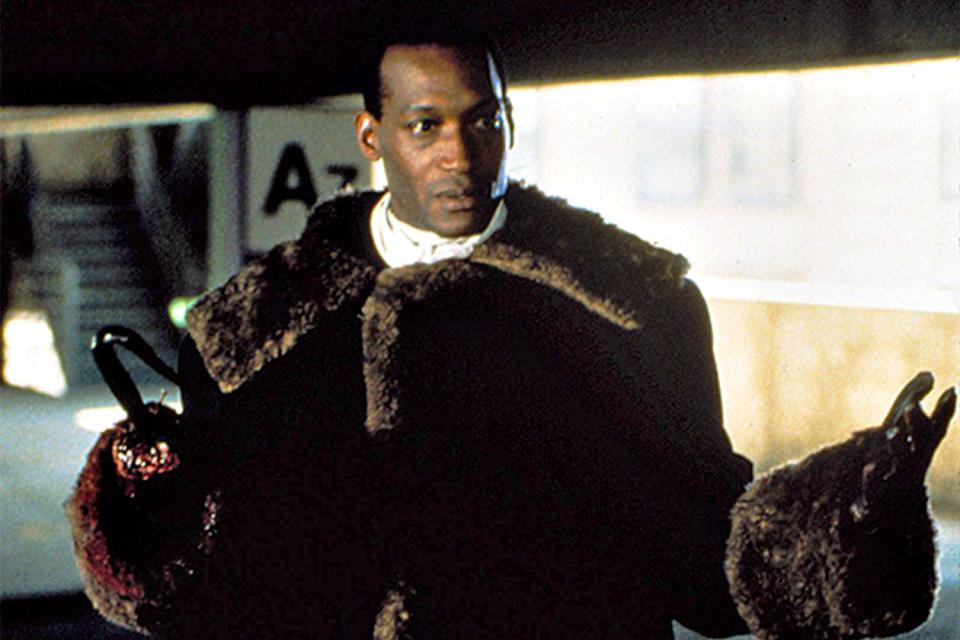
<i>Dead Alive</i> (1992)
Have you ever really wanted to troll a lover of Lord of the Rings? If so, all you have to do is invite them over for a movie night and promise to show them something from Peter Jackson's earlier film career. This is, of course, when you hit "play" on Dead Alive and just watch your friend's expression grow more horrified.
This movie (also released as Braindead) begins when South Wellington man Lionel Cosgrove's mother is bitten by a weird monkey, turning her into a zombie. He then must try to tend to mum and her decaying body — even as she inevitably starts creating more members of the undead. This leads to an explosive finale in which a weaponized lawnmower is used to truly "mow" down a horde of ravenous monsters.
The broad comedy of the characters and dialogue is often very effective. For example, a kung-fu priest's proclamation that "I kick ass for the Lord!" has lived in our heads rent-free for the last 30 years. However, the real laughs and appeal of Dead Alive come from how over-the-top the gore and effects really get. When you do show this to your Hobbit-loving friends, be sure to mark the exact moments they stop being disgusted and start laughing along with the chaos.
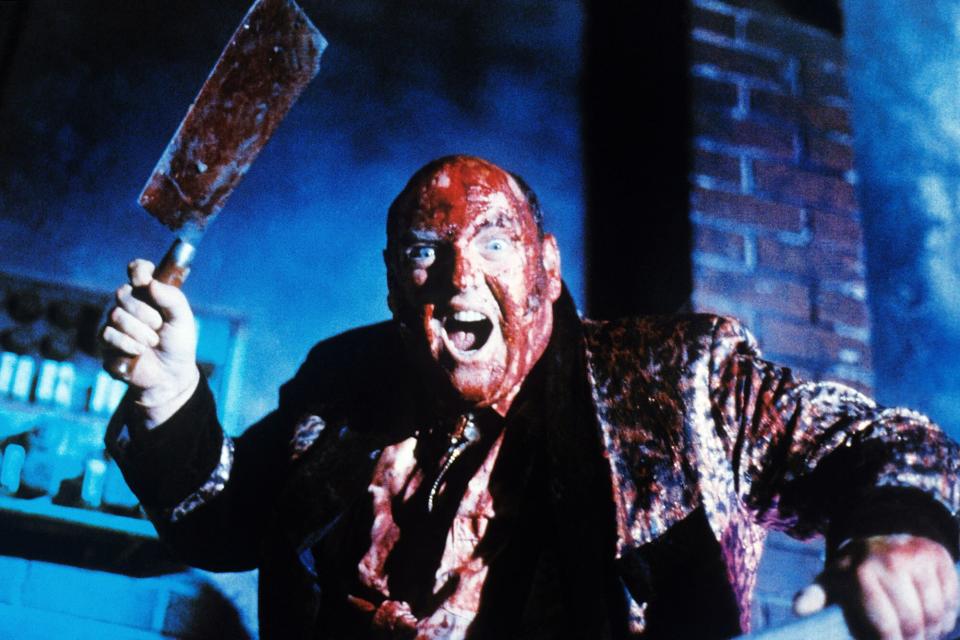
<i>Army of Darkness</i> (1992)
Sam Raimi is a legend among horror fans for many reasons, primarily for co-creating and directing the Evil Dead films. And though a cult favorite, one reason that franchise never quite achieved mainstream success is that Raimi was constantly reinventing both the main character Ash Williams (played by charismatic king Bruce Campbell) and the very idea of a horror movie. If you'll recall, the first Evil Dead was a relatively straightforward "cabin in the woods" flick, and the "sequel" was actually a remake that streamlined our characters and added more of the off-the-wall humor Raimi loves.
This leads us to Army of Darkness, the final film in the original franchise (not counting the surprisingly good 2013 Evil Dead remake, of course). With a bigger budget and a crazier premise (Ash is now stuck in medieval times), this film recenters our hero from hapless victim to rubber-faced action star.
Some fans prefer Ash as a normal guy who must deal with the evil that he accidentally helps to unleash. Others prefer Ash as the quip-spouting ("Listen up you primitive screwheads. This… is my BOOMSTICK!") action hero jerk with a heart of gold. If you like that latter kind of protagonist, as well as severed limbs and geysers of blood, then you'll find yourself rewatching Army of Darkness several times a year.
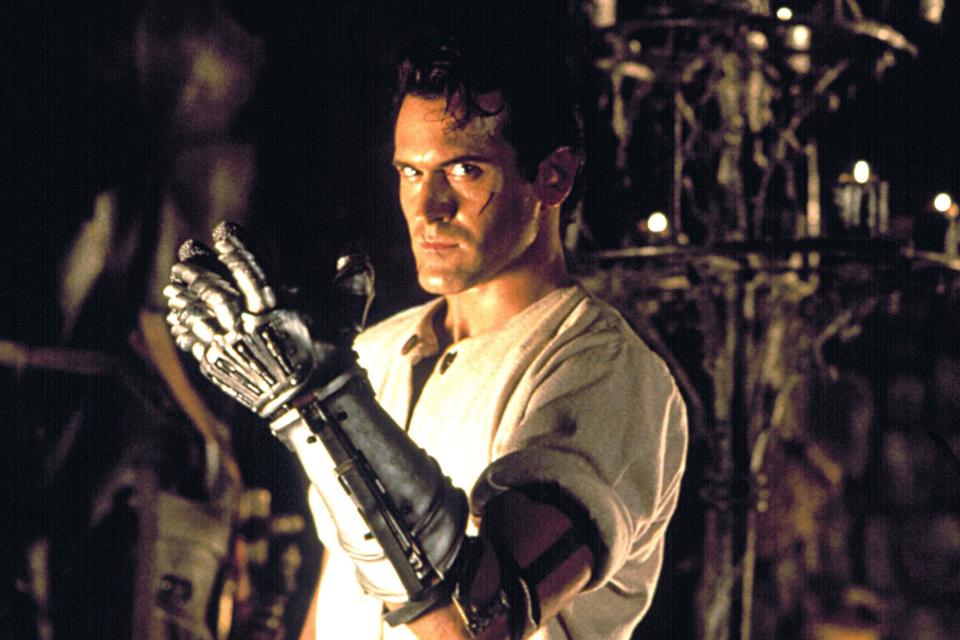
<i>Interview With the Vampire</i> (1994)
For better or for worse, the 1994 adaptation of Anne Rice's novel Interview With the Vampire helped to usher in our (still ongoing) fascination with the lives of vampires. Rather than presenting these characters as one-dimensional monsters, the movie presents vamps as flawed and tragic figures.
Of course, what makes their sadness pop is the sexiness of our main characters. As the titular interviewed vampire, Brad Pitt helps to sell the paradox that being hot and immortal might not be everything it's cracked up to be. But the real revelation in this movie is that Tom Cruise was able to bring Anne Rice's legendary Lestat to life so convincingly.
In fact, Rice had previously objected to the casting of both Pitt and Cruise in the movie, but later told a producer they "went way beyond her expectations." She even went so far as to personally call Tom Cruise to apologize for ever doubting him and praise his "wonderful" performance.
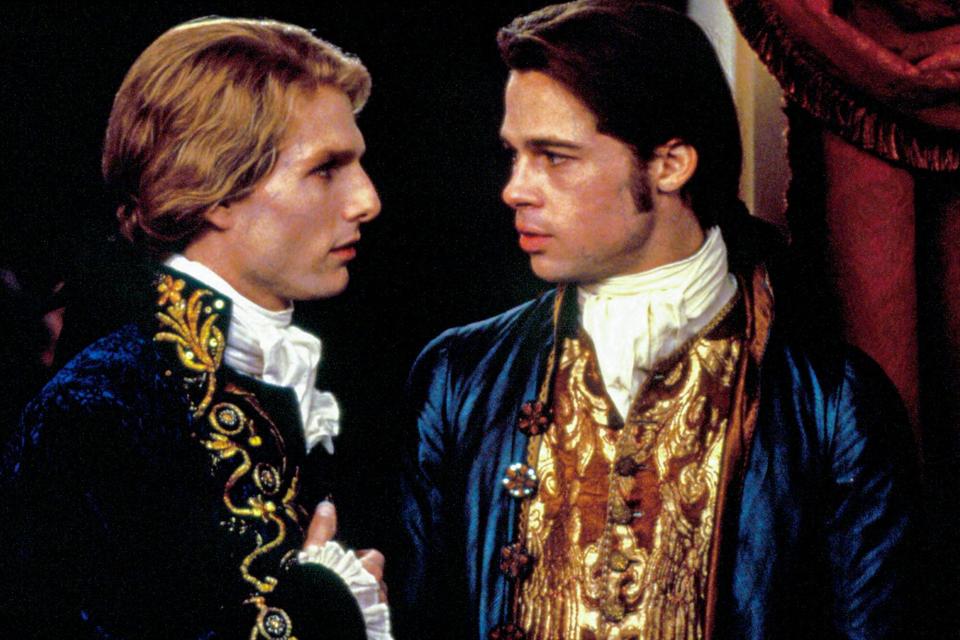
<i>In the Mouth of Madness</i> (1994)
John Carpenter's film output in the 1990s was decidedly mixed, including the baffling sequel Escape From L.A. and the divisive horror movie Vampires. In the Mouth of Madness was also critically mixed but rises above the rest nonetheless, allowing the always-cynical Carpenter to comment on the relationship between creators and fans. Also, this movie looks beautiful. If you primarily associate Carpenter with the bleak expanses of The Thing or the urban grime of Escape From New York, you'll be amazed by what the director does with various landscapes in this film, weaving together an apocalyptic tale that is one part Stephen King, one part H.P. Lovecraft.
The narrative revolves around Sam Neill's character John Trent trying to track down Sutter Cane (Jurgen Prochnow), a famous King-like horror novelist who has gone missing,and retrieve his latest manuscript, but his reality begins unraveling almost right away. He eventually encounters the author, whose fans' love of his work has begun unleashing Lovecraftian terrors. Rather than wishing to save everyone, Cane charges Trent with ensuring his final novel is published, even if it means the world's collapse. Not only does this perfectly cap off what Carpenter called his "Apocalypse Trilogy" (comprised of The Thing, Prince of Darkness, and this film), it also reveals the frustration of a creator trapped by both fan expectation and studio limitations (including the budget for this very movie being nearly cut in half).
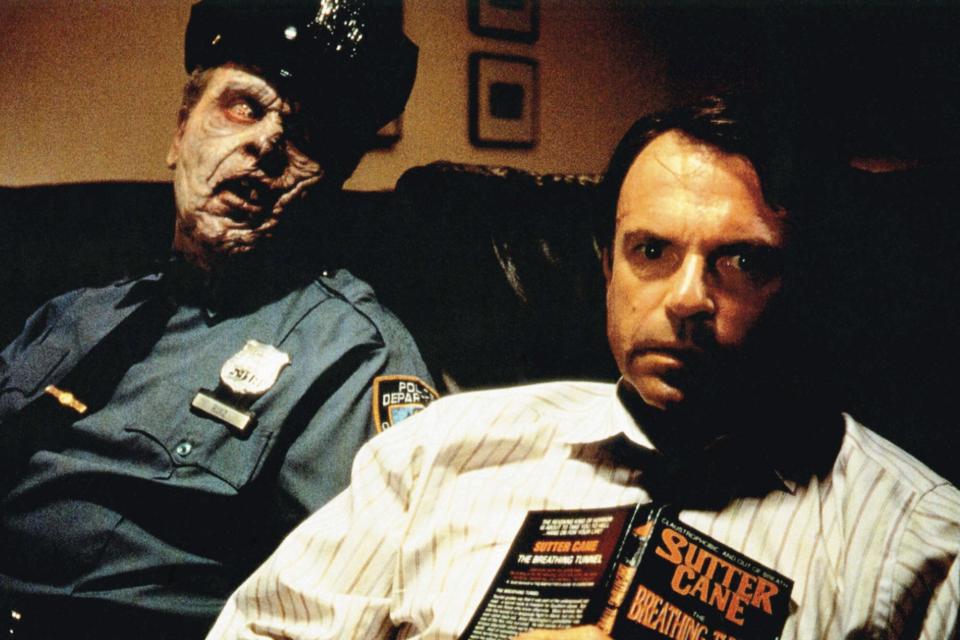
<i>Wes Craven's New Nightmare</i> (1994)
When you think about '90s horror and Wes Craven, you're likely to think about Scream, the hot new franchise he introduced that is still thriving to this day. But before introducing the world to Ghostface, Craven decided to give us the definitive vision of A Nightmare on Elm Street. And in addition to serving as a captivating film centered on Freddy Krueger, this movie also shows early glimpses of the meta-horror that Craven would soon bring to mass audiences.
How is it meta? Well, this movie takes place in the real world. And though Freddy is a fictional character. However, when people start dying on the set of the latest Elm Street film and apocalyptic earthquakes become more frequent, it looks like the dream demon may be real — and may have found a permanent way to enter our reality.
The magic of this movie is that it dazzles long-time Freddy fans as well as those who were over A Nightmare On Elm Street after the first film. Actors play themselves here, including franchise favorites like Heather Langenkamp and John Saxon, with Craven even popping up as himself. But as reality bends, these characters begin slipping more into the familiar fictional world. The result is a startlingly fresh take on Freddy and a great treatise over the power we allow (or choose not to allow) horror movies to have over our lives.
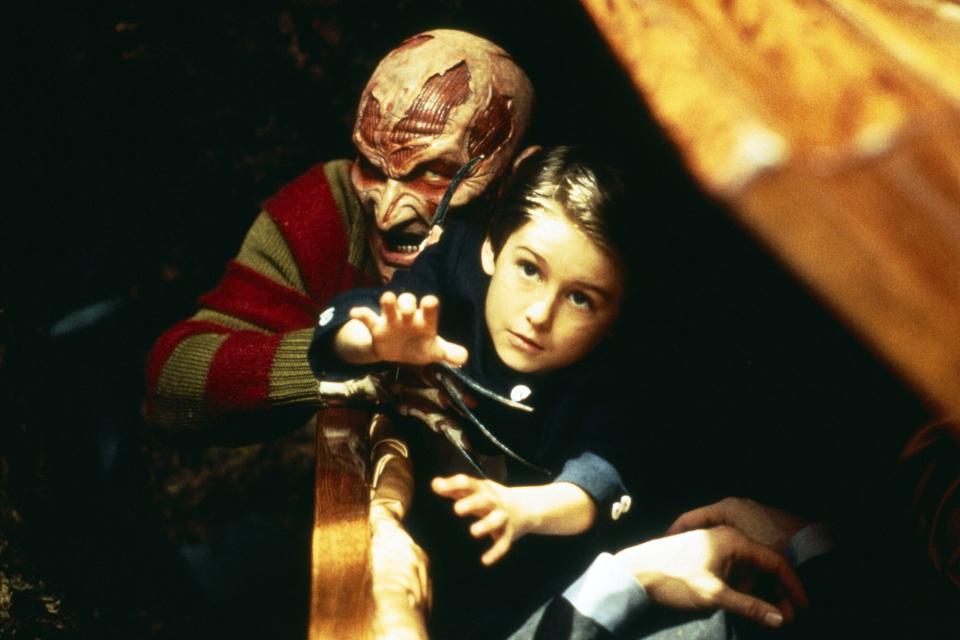
<i>Se7en</i> (1995)
On paper, Se7en could have been a gimmicky mess. A movie about a serial killer offing people in methods inspired by the Seven Deadly Sins could have been nothing but shlock setpieces. However, director David Fincher imbues the movie with as much psychological tension as outright gore, giving us an unexpected level of depth along with scene after memorable scene.
Audiences were understandably skeptical about this movie since the previous Fincher film was the forgettably bleak Alien 3. But as we watch Morgan Freeman and Brad Pitt's characters try to track down a mysterious serial killer, we are forced to ask ourselves the same compelling question they are. Specifically, what kind of monstrously evil person could be committing these murders?
It's only near the end that we get to meet John Doe, played to creeptastic perfection by Kevin Spacey, who ushers in that final twist that is sure to make your stomach drop.
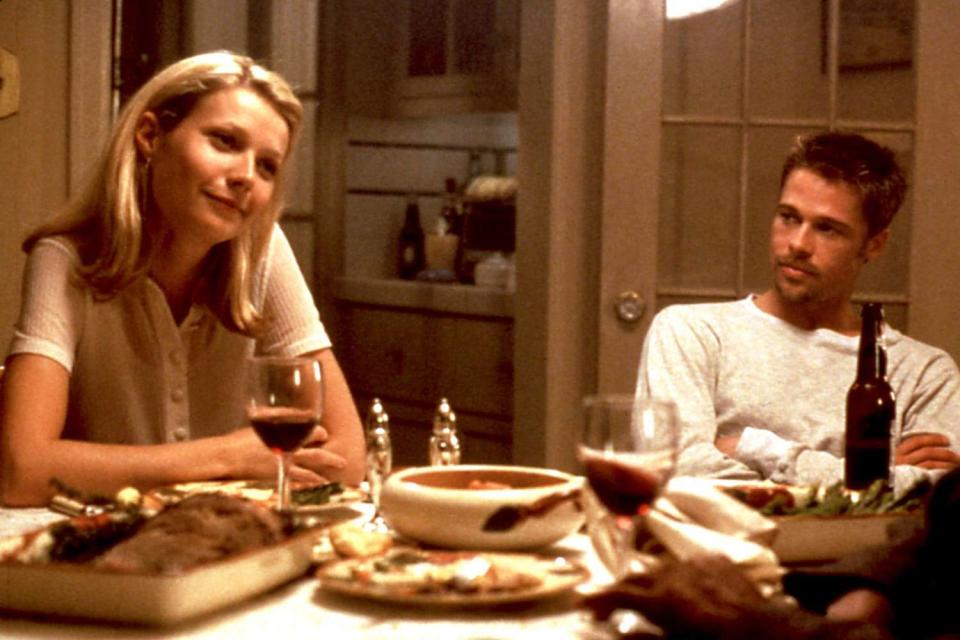
<i>From Dusk Till Dawn</i> (1996)
Everyone has had that experience of watching something, getting bored halfway through, and then putting on something more exciting. And while it was likely unintentional, this is the effect that Robert Rodriguez pulls off in his iconic vampire movie From Dusk Till Dawn.
The first half of the movie is a mostly by-the-numbers crime film, but it keeps things interesting thanks to the confident swagger of George Clooney, the vulnerability of Juliette Lewis, and the growing creep factor of Quentin Tarantino (who also wrote the screenplay) Clooney and Tarantino play bank robbers who force a hapless family to transport them across the border to Mexico after a job gone wrong. When they arrive and enter a raunchy bar, though, they soon find themselves surrounded by undead vampires.
This is an uneven movie in every sense of the word. But it's impossible not to love the outsized characters, environments, and dangers. Tom Savini as a "Sex Machine" with a gun on his crotch? Salma Hayek as a stripper that turns from sexy to scary on a dime? Yes, please! And it's downright fun to watch the characters brainstorm ways to kill these vamps, including asking a pastor that has mostly lost his faith whether he can bless (and therefore weaponize) water against the undead horde.
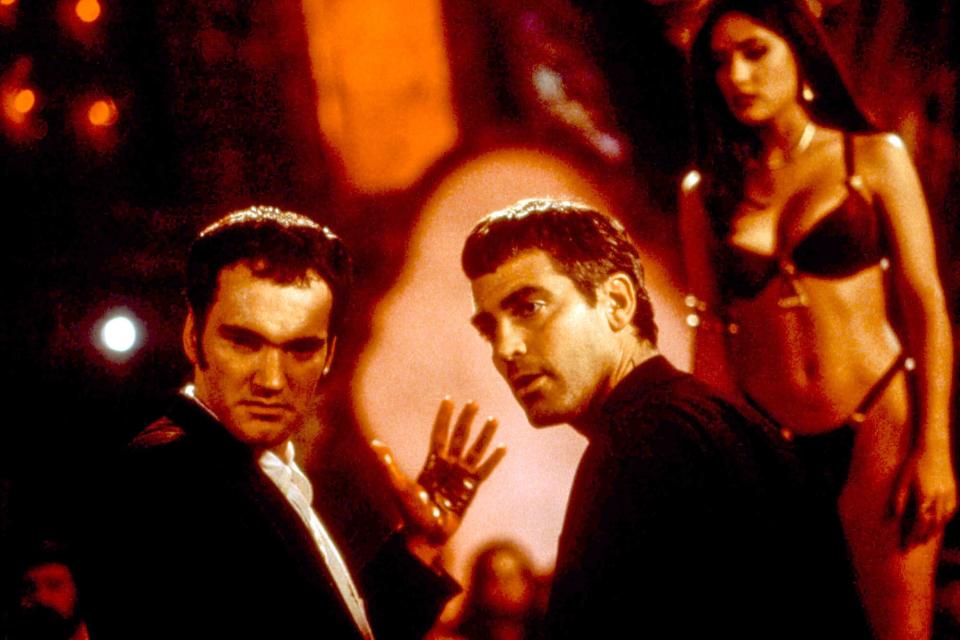
<i>Scream</i> (1996)
We like to think the original Scream would have flourished in any decade. However, it's undeniable that a big part of this film's success was it coming out at just the right time. As we noted before, slashers were very played out by this time, so the stage was set for this whip-smart script by Kevin Williamson to turn the genre on its head. And only director Wes Craven, whose Nightmare On Elm Street films helped define the slasher genre, could bring a high-brow slasher to life.
However, there were some potential obstacles to this movie's success. As Michelle Delgado points out in her retrospective, Williamson was largely inspired by watching an episode of Turning Point focused on the Gainesville Ripper, and national concerns over real violence soon led to concerns over cinematic slayings. Nonetheless, this movie "arrived just as a national debate about on-screen violence was boiling over." Through the character of Gail Weathers (Courteney Cox), the movie shows us how our media's fixation on violent killers may actually be empowering them rather than shining a bright light on dark deeds. And as Delgado notes, the film's "horror comes from the reality that violent crime is more likely to lurk close to home" rather than the far-off crimes and criminals that kept us glued to our television sets.
The reason the Scream franchise is stronger now than ever before is that Craven's exercise in meta-horror did not content itself with poking fun at existing horror tropes (although watching Jamie Kennedy give "the rules" of surviving a horror movie never gets old). The movie also forces us to struggle with an uncomfortable paradigm in which the biggest fans of onscreen horror become perpetrators of actual violence, a theme still very much alive in the more recent movies. Still, don't mistake this narrative anxiety to mean that Craven agrees with his detractors that violent movies inspire violent actions. As an unmasked killer in Scream famously proclaims, "Movies don't make psychos! Movies make psychos more creative!"
Considering both the Gainesville Ripper and Jeffrey Dahmer drew inspiration from Exorcist III, there may be more than a bit of truth to that idea. But since horror mogul Wes Craven never turned into a dream demon or a masked, ghostly slasher, we'll keep taking our chances re-watching these frightening '90s movies year after year.
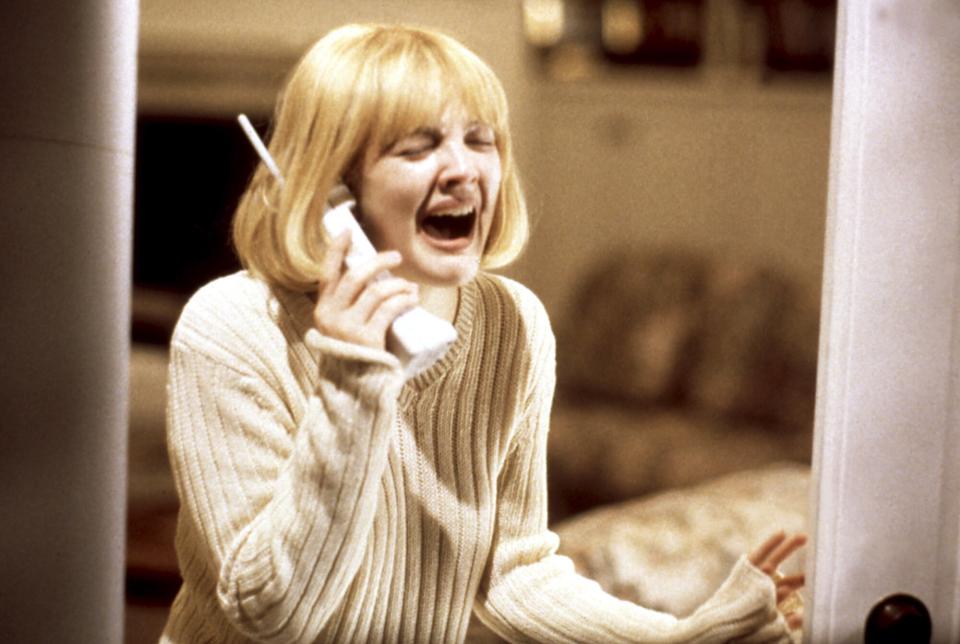
<i>Cube</i> (1997)
Vincenzo Natali's 1997 film Cube is a curious construct (and we're not just talking about the Cube itself). At a glance, the best part of the movie is the spare nature of its premise: strangers with no memory of how they arrived meet in a large room (the titular Cube). The characters must navigate different booby traps and escape from one cube into another. With a bit of calculation, they can determine which rooms are safe and find a way out. Once you get past the immediate scares over the brutal boobytraps, you are left with a kind of existentialist dread that persists long after the credits roll. Imagine Minesweeper with fatal consequences for being wrong, and you've got the general idea.
If nothing else, Cube should be lauded for its outsize influence on more recent horror, walking so thatSaw could run (before of course sputtering to a halt). And it's difficult to watch characters navigate the perils of Squid Game without thinking of that mysterious cube and the inventive methods of torture and death that await in each new room.
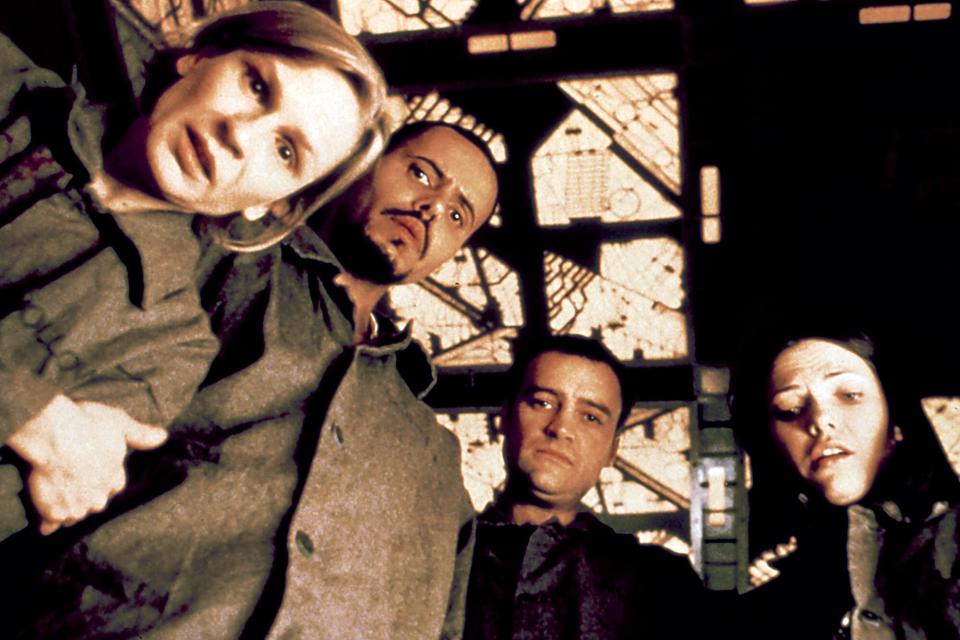
<i>Event Horizon</i> (1997)
Some have called Event Horizon a tad derivative, and they're not wrong. The original pitch for this movie was almost certainly "Hellraiser meets Alien." Nonetheless, as the credits roll, you may just find yourself wondering why we don't have more cosmic horror set in the cosmos.
The plot involves Sam Neill as the inventor of a faster-than-light ship once thought lost to the void that suddenly reappears, leading his team to go retrieve it. But since traveling through a time warp exposed the ship to hellish chaotic forces (we can't help but think either director Paul W. S. Anderson or writer Philip Eisner are fans of Warhammer 40,000), our hapless characters are venturing into the one thing worse than hell on Earth: hell in space.
Critics didn't exactly love this movie when it came out, but it achieved well-deserved cult status in later years. And even when its pieces don't fit together perfectly, it is joyful to watch Sam Neill, Laurence Fishburne, and Jason Isaacs in a sci-fi horror movie together.
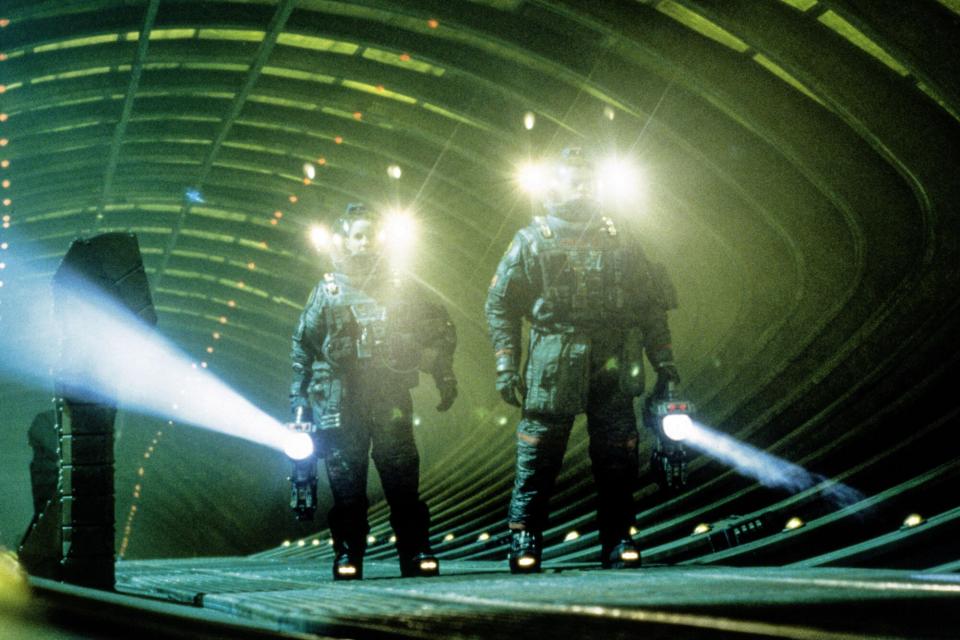
<i>The Blair Witch Project</i> (1999)
Many of the movies on this list are divisive, but none, perhaps, are quite as much as The Blair Witch Project due to the truly guerilla nature of the film. Shot in only eight days and for a budget in the hundred thousands (it would go on to gross almost $250 million), the film looks exactly like what it is: a disjointed story of three friends wandering around in the woods hunting down the mythical "Blair Witch." Fortunately, it is elevated by both its admirable restraint and one of the savviest marketing campaigns in horror history.
The film's online rollout was beautiful in its simplicity, claiming that the actors involved were now either dead or missing. Just like that, what might have been dismissed as a very basic found footage flick was transformed into a harrowing document recording the final days of three hapless characters.
Good marketing alone didn't help this movie make a quarter of a billion dollars, though. That success can also be attributed to its scare factor, leaning into the fact that we are most scared by the things that we can't necessarily see and definitely don't understand (which can be as simple as weird sounds, missing maps, or someone standing in a corner for no reason). And since digital effects have exploded in recent decades, this back-to-basics horror film feels fresher than ever.
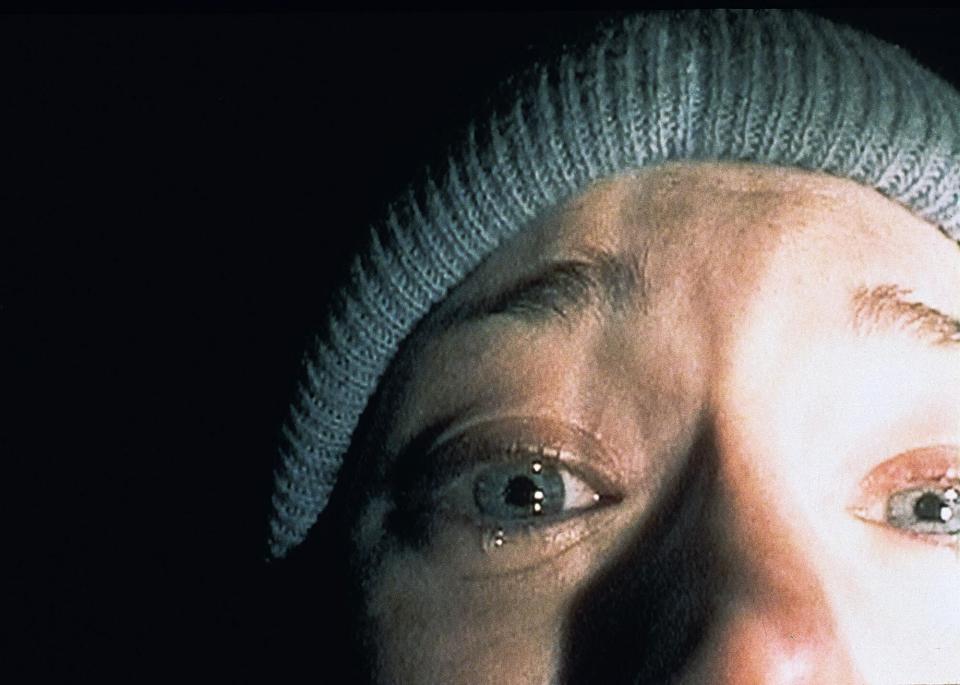
Related content:

